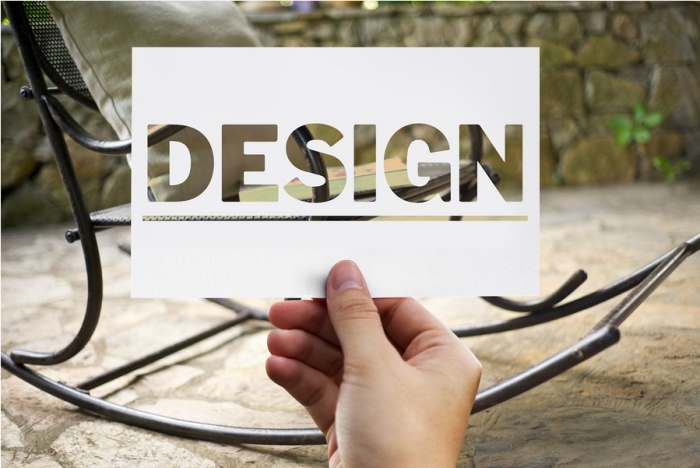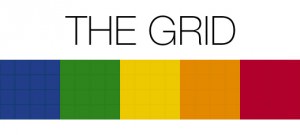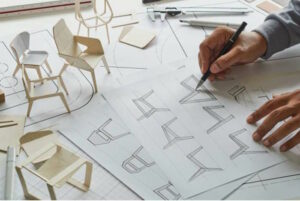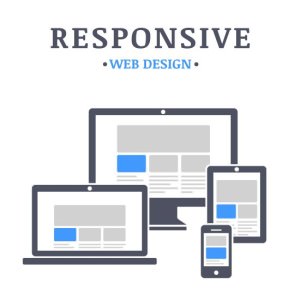The 5 Stages in the Design Thinking Process
Beginning with primitive hunting equipment to the web browser you hold in your hand, design is the link between aesthetics and functionality in things developed by humans. Could design successfully serve as a corporate science, a means of inventing and redefining the methods wherein we engage with the world?
The cornerstone of design thinking is this notion. This iterative, empathy-driven method may broaden your clientele, boost sales, and play a key role in the creation of new goods and services.
Design Thinking

The conceptual model called “design thinking” can help you come up with original answers to challenging issues. It necessitates producing concepts through stages of analysis and testing of UX design companies to ensure that only the finest ideas advance.
No matter what its application to design thinking is:
- User-centered creative thinking is a strategy. Identifying and meeting the unfulfilled needs of the people you serve is the aim. Creative problem-solving using design thinking entails learning more about your target audience rather than just testing a theory. Design thinking gives social innovation its “social” component.
- The process of design thinking is ongoing. It is nonlinear, promoting constant contemplation and perhaps requiring backward movement before forward movement. To get input, you may prototype or mock up ideas. At each stage, you can test the idea and make changes.
1. Empathize
Design thinking’s empathy phase entails extensive market research to fully comprehend the demands of your intended audience. To discover more about the experiences and expectations of your clients, start by performing market research.
Currently, neither sophisticated problem-solving nor hypothesis testing is the main objective. Instead, identify problems by raising inquiries. To clarify the meaning of these problems to the other members of your team, you might wish to create a problem statement.
2. Define
It encourages designers to approach the issue using a more human-centric angle as they mix, assess, and try to observe particular issues that their consumers could have at this point.
Designers will start to create user personas and empathy maps at this point, as well as look at user journeys, among other things. These actions help to more precisely define and reflect the requirements of broader user groups, such as individuals who share certain traits or difficulties.
3. Ideate
During the ideation stage, you conjure up original fixes for the issues you’ve discovered. Making decisions during the ideation phase is still replaced by producing possibilities.
Since nothing is taken off the table during this third stage of the creative thinking process, it may be among the most entertaining ones.
Playing quickfire games that promote spontaneity and spontaneous association is a common component of ideation approaches. You should now express your most original ideas.
The reserve of judgment is maybe most crucial for ideation. Designers shouldn’t be hesitant to present their ideas, and they should be prepared to defend them if another designer believes that the idea is not practical. The only way to arrive at the best design solution is to explore a wide range of options.
4. Prototype
Your ideas will be turned into a basic model during the testing phase, or preferably, many preliminary models so you can choose which elements are suitable for a known online and which ones aren’t.
Think of this as a forum for potential solutions.
The prototype may provide you with an early indication of customer input and help you decide whether you can address the issues you noticed during the empathy phase.
Involves quickly creating relatively simple prototypes in response to feedback and steadily changing them with subsequent rounds of responses until it becomes comfortable that a design is ideal for the purpose. At the center of many creative and technological creation methodologies.
5. Testing
Testing depends so considerably on the preceding phase, it is challenging to truly assign checking to a separate process. Yet, testing is a vital component of prototypes because it may and should guide the knowledge that can lead to an ongoing prototype process.
Having said that, testing frequently refers to introducing a potential customer to a late-stage concept to gather direct feedback and see how well consumers interact with it.
This is different from running concepts by stakeholders. Following that, the very last steps of prototype and development may be guided by this knowledge.
The last stage is to publish your design and evaluate how users react to it.
Repeat the creative process at step one after that. The circle of creativity and experimentation that is design concept has no clear beginning or finish; there is always room for growth.
Go back to the initial stage you performed to develop client empathy when you review your design. Evaluate whether you have satiated their expectations and wants.
Are the issues you set out now to solve being resolved? Have you gained new insights while implementing your idea in the real world?
Use of Design Thinking
- It takes time to figure out when and how to apply design thinking to your firm. Apply creative thinking ideas to commonplace scenarios to start and determine which approaches provide ideas that are worth exploring. These are some essential principles to bear in mind:
- Embrace ambiguity. In the early stages, you could run into issues that seem impossible to address. Instead of retreating, see these difficulties as possible routes to fresh concepts.
- Recover from errors. The technique used in design thinking is tolerant and encourages experimentation. If your ideas don’t initially pan out, resist the impulse to give up. Instead, see setbacks as potential future solutions and use these lessons learned in your pursuits.
- Contest premises and conclusions. Design thinking’s earliest stages are intended to dispel preconceived notions about the requirements and desires of your target audience. Use design theory to refine and enhance your ideas even after you’ve shared them.
Like any other talent, design thinking has to be honed. When design thinking is effective, fresh thought emerges from receptive participation. The more frequently the experiences occur, the greater you and your team will enjoy a rise in creative confidence.
Conclusion
- Those that use design thinking are better able to concentrate on the answer rather than being mired in the issue.
- Businesses can better satisfy the demands of their consumers thanks to this method, which helps them better understand those needs.
- Businesses may develop original, creative solutions to issues by using design thinking.
- When a customer is actively involved in the process, the design thinking methodology can assist in more effectively addressing their needs.
- Businesses may use design thinking to continuously improve customer satisfaction by learning more about it, monitoring it, and, if required, making adjustments to their goods or services.








